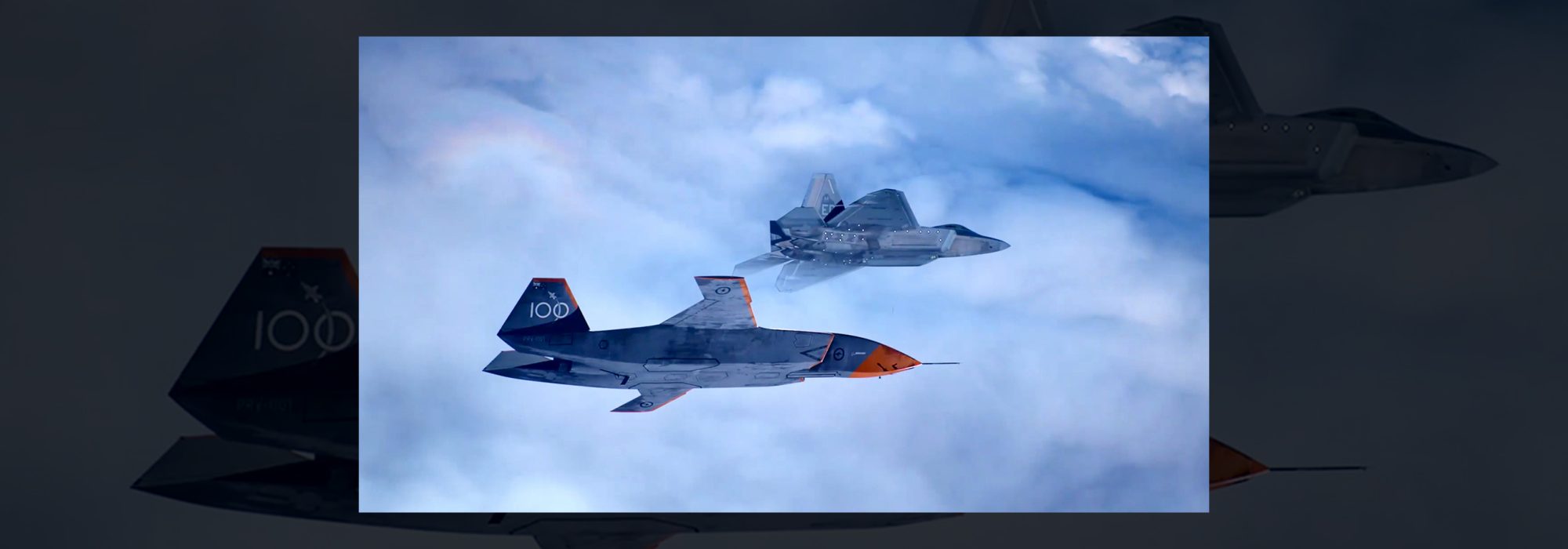Tactical Air Dominance
The Air Force is taking a near-, mid-, and long-term approach to preserving the advantage in tactical aviation it still holds and to regain advantages it has lost in recent years.
It’s the Air Force’s job to achieve air superiority for the joint force, when and where it’s needed. Air superiority not only protects U.S., allied, and partner territory and forces, it ensures freedom of operation and movement for coalition assets; both intelligence, surveillance, and reconnaissance (ISR) aircraft as well as mobility aircraft and surface forces. Air superiority is achieved “when friendly operations are able to proceed without prohibitive interference from opposing forces,” according to the Air Force’s 2016 “Air Superiority 2030 Flight Plan.”
CHALLENGE: Controlling the air domain is an imperative if the nation and U.S. allies are to be successful in future operations. The Air Force’s tactical fleet has to be affordable. The F-35, F-15EX, and Next-Generation Air Dominance fighter are too expensive to fully equip an Air Force of the size needed; a less costly, uncrewed autonomous aircraft— some of which may be attritable—must be in the mix.


APPROACH: The NGAD family-of-systems includes a new crewed platform. It will also partner with uncrewed combat aircraft, requiring connectivity between those platforms, the sensors that support them, the suite of weapons they carry, and more. This concept includes notionally one or more unmanned combat aircraft operating in a formation controlled by a single, modern, crewed aircraft—principally the NGAD, but also the F-35.
Air Force fighter modernization was underfunded since the 1990s, with new aircraft added at a rate far below the 72 new fighters a year needed to keep the fleet under 28 years of age. Against a vetted requirement for 381 F-22 fighters, for example, the Air Force was only permitted to acquire 186.
During that period, the U.S. was focused on counterinsurgency operations in Afghanistan and Iraq—without a peer adversary in the air to worry about. But China, Russia, and other potential opponents studied U.S. designs and concepts of operation, developing highly sophisticated air defenses and fifth-generation aircraft intended to challenge America’s ability to control the air. The Air Force now projects that the F-22—by all accounts, the world’s greatest air superiority fighter—will be outclassed by Chinese capabilities circa 2030.
At the same time, the Air Force’s fighter capacity to cover theater commander needs in multiple places at once has been sharply diminished by retirements and divestitures, and the service has declined to set a force-sizing metric to establish a base number of aircraft.
Many of the reductions to U.S. combat air forces have come as a result of older aircraft aging out due to structural fatigue or obsolescence.
To counteract those trends, the Air Force is pursuing four objectives to regain air superiority:
1. Field leap-ahead fighter technology that can reliably prevail in any conflict.
2. Build enough fighter capacity to cover multiple theaters of operation simultaneously. That means enough aircraft to endure wartime attrition, something the Air Force has not seen in 30 years.
3. Deter potential aggressors by convincing them that the cost of attacking U.S. allies, partners, or interests far outweighs likely gains.
4. Achieve all of the above before China or any other adversary can build a qualitative or quantitative advantage able to negate U.S. capabilities.
Air Force Secretary Frank Kendall, Air Force Chief of Staff Gen. Charles Q. Brown Jr., and Chief of Space Operations B. Chance Saltzman wrote in their 2024 budget posture statement that, “For over 75 years, the Air Force has dominated opponents in the air,” but now the People’s Republic of China “is challenging that dominance, and we cannot afford complacency, nor can we afford Air Force capability and capacity composed largely of fighters that cost as much as or more than the F-35.”
Near-Term Investment
After years of paying lip service to the goal of buying 72 fighters a year, USAF requested 48 F-35As and 24 F-15EXs in its fiscal 2024 proposal. They will be somewhat offset by the retirement of F-15C/Ds, which have exceeded their planned service lives. But the Air Force will also upgrade some of its F-15E Strike Eagle fleet with the Eagle Passive Active Waring Survivability System (EPAWSS) electronic warfare suite. It also will update its F-16s with active electronically scanned array (AESA) radars, among other improvements.
USAF is also upgrading its most advanced F-22 fighters, with new sensors, stealth, communications, and navigation systems, as well as new weapons—including the AIM-260 Joint Advanced Tactical Missile (JATM). The JATM should restore the F-22’s first-look, first-kill capability against adversary fifth-generation fighters. It will have three or four times the range of the AIM-120 AMRAAM that U.S. fighters carry today.
The fifth-generation F-35, with new capabilities in its Block 4 version, will be the “backbone” of the Air Force fighter force. With over 350 now in service, the Air Force continues to aim for a total of 1,763 F-35s. At the same time, USAF is working toward closing out its planned purchase of F-15EX fighters. The Air Force would end production at 104 jets if current plans are approved, but Congress could add to that number and the final buy may be closer to the original plan of 144.
Mid-Term Outlook
Circa 2030, the Air Force expects to retire the F-22 fleet in favor of the Next-Generation Air Dominance (NGAD) family of systems. The centerpiece of NGAD is a highly classified ultra-stealthy sixth-generation crewed aircraft, but it will be complemented by an undisclosed number of Collaborative Combat Aircraft (CCA). These uncrewed, autonomous jets will be equipped for sensing, ISR and jamming functions, and some could carry additional munitions or serve as decoys.
NGAD fulfills the first objective of the tactical air dominance requirement: an air superiority capability that can prevail over any adversary. Intended to far surpass China’s fifth-generation J-20 fighters, NGAD seeks to recover the leap-ahead status enjoyed by the F-22 when it was first deployed. NGAD is being designed from the outset to be rapidly and easily upgradeable, employing an open systems architecture to enable rapid integration of new sensors and weapons, added processing power, and updated software. NGAD technology demonstration programs began about 2015 and at least one prototype has flown. The Air Force expects to award a contract for the crewed aircraft element in 2024.
The Air Force initially aimed to have multiple NGADs in development at once, fielding new designs every 5 to 8 years, but that approach proved too expensive, Kendall said earlier this year. A single platform will be selected instead. Each NGAD is likely to cost “hundreds of millions” of dollars, he acknowledged, adding that the initial acquisition objective could be a force of about 200 aircraft.
The Navy’s NGAD, also known as FA-XX, is a separate program, and while the services say they’ll compare notes and share technologies, the jets won’t be variants of one another, like the three versions of the F-35 used by the Air Force, Navy, and Marine Corps.
The Air Force NGAD may come in two variants, though: one configured to operate in the relatively confined European theater and another with an extended-range model optimized to cover the “tyranny of distance” in the Pacific theater.
The Air Force is seeking $2.33 billion for NGAD development in fiscal 2024, and $26 billion through fiscal 2028. In his markup of the fiscal 2024 defense bill, House Armed Services chair Mike Rogers (R-Ala.) took $550 million out of NGAD without explanation, although he characterized the cut as a “deferment,” suggesting it will be added back later.
The Air Force will complement NGAD with Collaborative Combat Aircraft, which are envisioned as adding fighter capacity without the costly life-support systems that drive up the cost of crewed aircraft. Kendall has said he is notionally looking for airframes at less than half the cost of an F-35.
The aim is a fleet of perhaps 1,000 to 2,000 CCAs that would vastly expand the aerial armada the Air Force can deploy, presenting a cost-imposing problem for China, which would have to treat each airframe as a full-up threat. The U.S. could absorb CCA losses at less cost in life and treasure than an all-crewed force. Greater attrition is expected in peer combat.
Although several types of CCAs were envisioned originally, Kendall has more recently suggested that USAF will select a single base platform “chassis” fitted with a modular airframe which can support a variety of specialized kits for different mission sets, such as Suppression/Destruction of Enemy Air Defenses (SEAD/DEAD), ISR, jamming and electronic warfare, and communications.
“A reasonable way to think about it is an airframe with different payloads that can be swapped out, depending on the mission,” Kendall explained in a speech at the McAleese defense conference in March.”
The CCA concept will be developed in parallel with the technology. Operators will get rough prototypes as soon as possible to try out tactics, techniques, and procedures for manned-unmanned teaming in air combat. It’s essential that aircrews learn to trust and be confident in autonomous partners. All of this will likely redefine what constitutes a squadron. The Air Force is studying various mixes of crewed and uncrewed aircraft..
The Air Force has asked for $392 million to invest in CCAs in fiscal 2024, rising to $3 billion per year by fiscal 2028, for a total of $5.8 billion across the five-year budget plan. CCAs are funded within the NGAD account in fiscal 2024.
Long-Term Outlook
In the 2030s, the Air Force plans to field at least 200 NGADs, up to 2,000 CCAs, 600 additional F-35s, and potentially another new aircraft, a “fifth-gen-minus” aircraft late in the decade. Dubbed either the MR-F or MR-X, this jet would replace the F-16 for use in theaters with lesser air defense threats. At present rates, the Air Force won’t field its final F-35 until the late 2040s.
